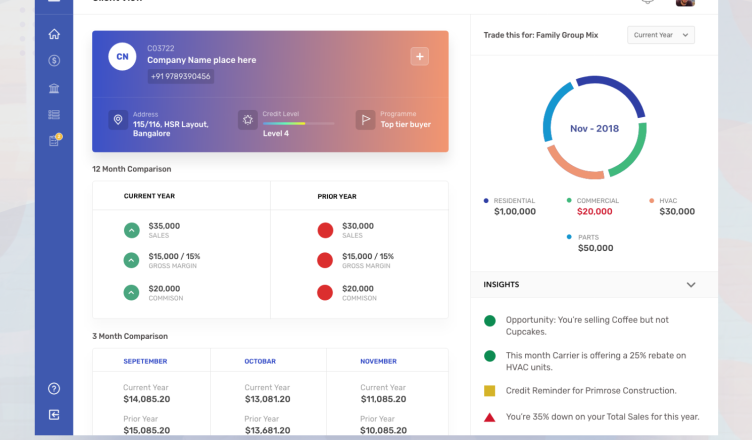Let’s be honest. For most small business owners, “sales forecasting” sounds about as exciting as watching paint dry. And, frankly, the old way of doing it—staring at spreadsheets, relying on gut feelings, and crossing your fingers—isn’t much better. Your gut is a great tool for many things, but predicting the future? Not so much.
That’s where AI comes in. And before you dismiss it as some expensive, futuristic tech for the big players, hear me out. AI-powered sales forecasting has become a game-changer for small businesses, leveling the playing field in a way that was unimaginable just a few years ago. It’s like swapping out a rusty compass for a real-time GPS for your business’s financial future.
What Exactly Is AI-Powered Forecasting? (And What It’s Not)
At its core, AI-powered forecasting uses machine learning algorithms to analyze your historical sales data and, crucially, a whole host of other factors. It then spots patterns, correlations, and trends that are simply impossible for a human to see.
Think of it this way: your old spreadsheet might tell you that sales of cozy sweaters always go up in November. That’s helpful. But an AI model can tell you that sales of a specific type of cozy sweater spike when the local temperature drops below 50 degrees for two consecutive days, and when a particular competitor runs a sale, and when you’ve recently published a blog post about winter fashion. See the difference?
It’s not a crystal ball. It doesn’t magically know the future. It’s more like the world’s most diligent, data-obsessed analyst working for you 24/7. It learns from what’s already happened to make incredibly educated guesses about what will happen next.
Why Your Small Business Desperately Needs This
You’re agile. You’re close to your customers. But you’re also stretched thin. Here’s how AI forecasting directly tackles your biggest pain points.
Stop the Inventory Guessing Game
Running out of bestsellers is a nightmare. But being stuck with a warehouse full of slow-moving stock can be a death sentence. AI helps you find that sweet spot. By predicting demand with startling accuracy, you can:
- Reduce costly overstock and associated storage fees.
- Virtually eliminate stockouts and the lost sales that come with them.
- Optimize your cash flow by not tying up money in inventory that just sits there.
Make Smarter Decisions, Faster
Should you hire another salesperson? Ramp up production? Launch a new marketing campaign? With a reliable forecast, these aren’t just shots in the dark. You have a data-backed foundation for your most critical strategic decisions. It takes the emotion out of the equation and lets you lead with confidence.
Sharper Marketing and Resource Allocation
Why waste your limited marketing budget blasting generic ads? AI can predict which customer segments are most likely to buy and when. This lets you create hyper-targeted campaigns that actually convert. You can also align your team’s efforts—from manufacturing to customer service—with anticipated demand, making your entire operation leaner and more efficient.
Getting Started: It’s Simpler Than You Think
Okay, you’re convinced. But how do you, a busy small business owner with no data science degree, actually implement this? Well, the barrier to entry is surprisingly low these days.
The Tools Are Already at Your Fingertips
You don’t need to build an AI from scratch. Honestly, you don’t. Many of the business tools you might already be using are baking in AI features. Platforms like:
- CRM Systems (e.g., Salesforce, HubSpot)
- E-commerce Platforms (e.g., Shopify with various apps)
- Accounting Software (e.g., QuickBooks)
…now offer built-in AI forecasting modules. They connect directly to your data, so setup is often a matter of clicking a few buttons to activate the feature.
Your Data is Good Enough (Really)
Don’t worry if your data isn’t “perfect.” You know, a few gaps here, some messy entries there. Modern AI is designed to handle real-world, imperfect data. Start with what you have. Your sales history from the last couple of years is a goldmine. Even basic customer information and product details can fuel powerful insights.
A Peek Under the Hood: What the AI Actually Looks At
To really trust the process, it helps to know what factors these models consider. It’s not just your past sales. The AI might analyze:
| Internal Factors | External Factors |
| Historical sales data | Local weather patterns |
| Website traffic & engagement | Holidays & school schedules |
| Marketing campaign performance | Competitor pricing & promotions |
| Pricing changes | Broader economic indicators |
| Seasonal trends from previous years | Even social media sentiment |
The Human Touch: You’re Still the Captain
This is the most important part. AI provides the map, but you’re still the one driving the car. The forecast is a guide, not a gospel. Your own intuition, your direct conversations with customers, your knowledge of a one-off local event—these things matter. The magic happens when you combine the cold, hard data from the AI with your warm, on-the-ground experience.
Maybe the AI predicts a dip in sales, but you know you’re about to be featured in a major publication. You can adjust. That’s the power. It’s a collaboration.
The Future is Proactive, Not Reactive
For too long, small businesses have been forced to react. A slow month hits, and you scramble. A product suddenly sells out, and you panic. AI-powered forecasting flips the script. It gives you the clarity to be proactive. To see the bends in the road ahead and steer accordingly.
It’s about trading uncertainty for informed confidence. It’s about spending less time worrying about what *might* happen and more time building what you know *will*. That, in the end, is the real superpower.

